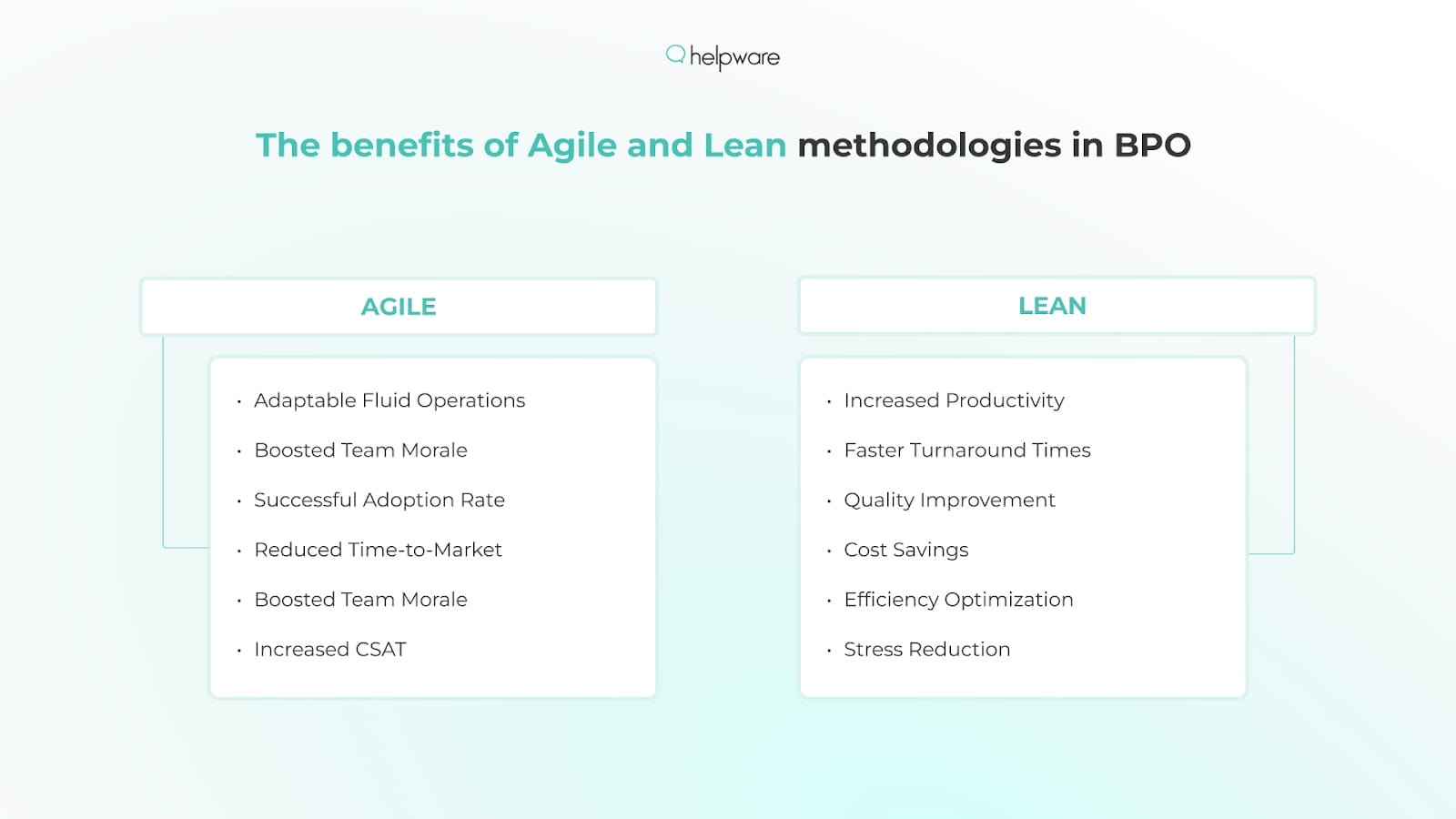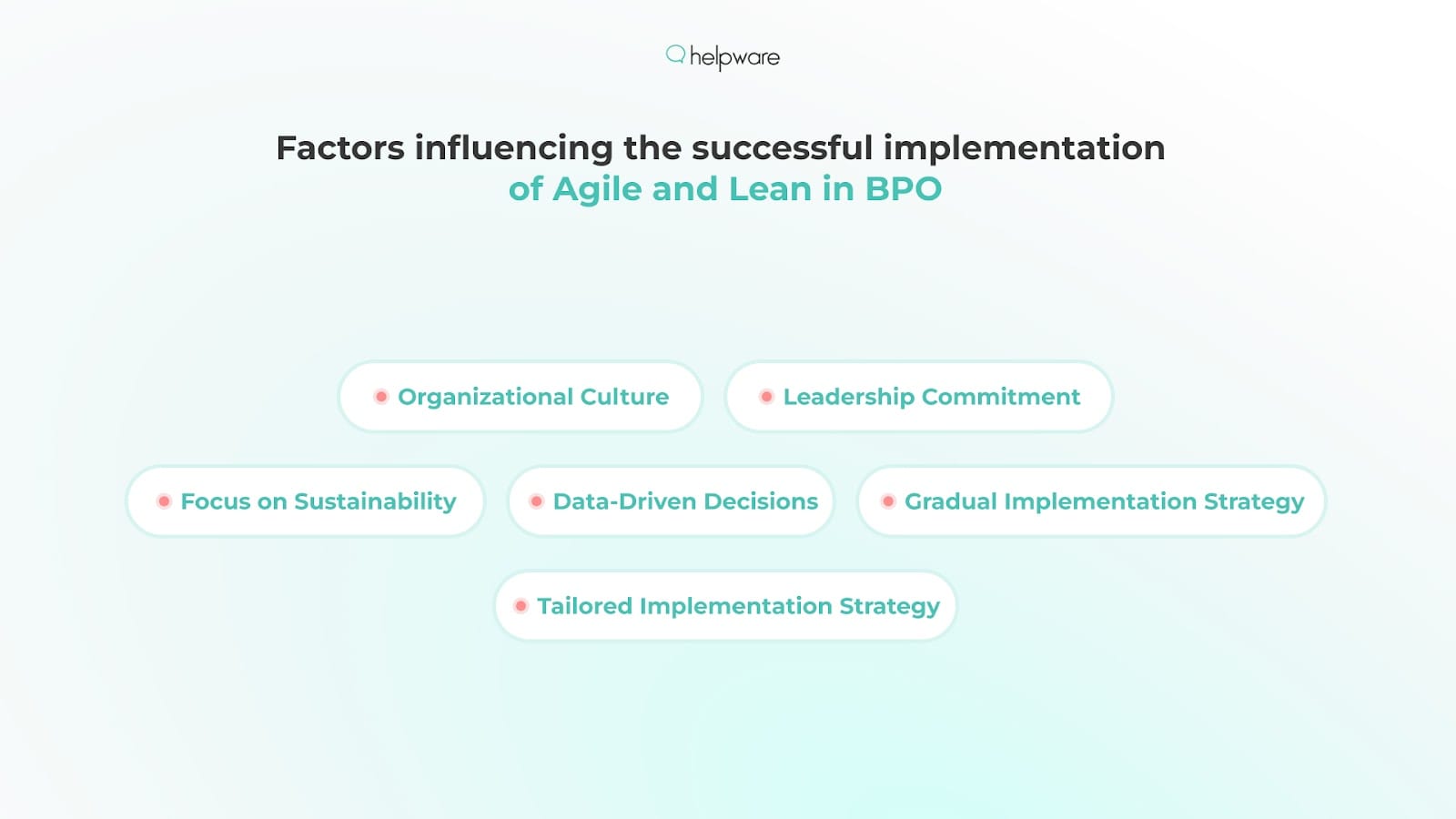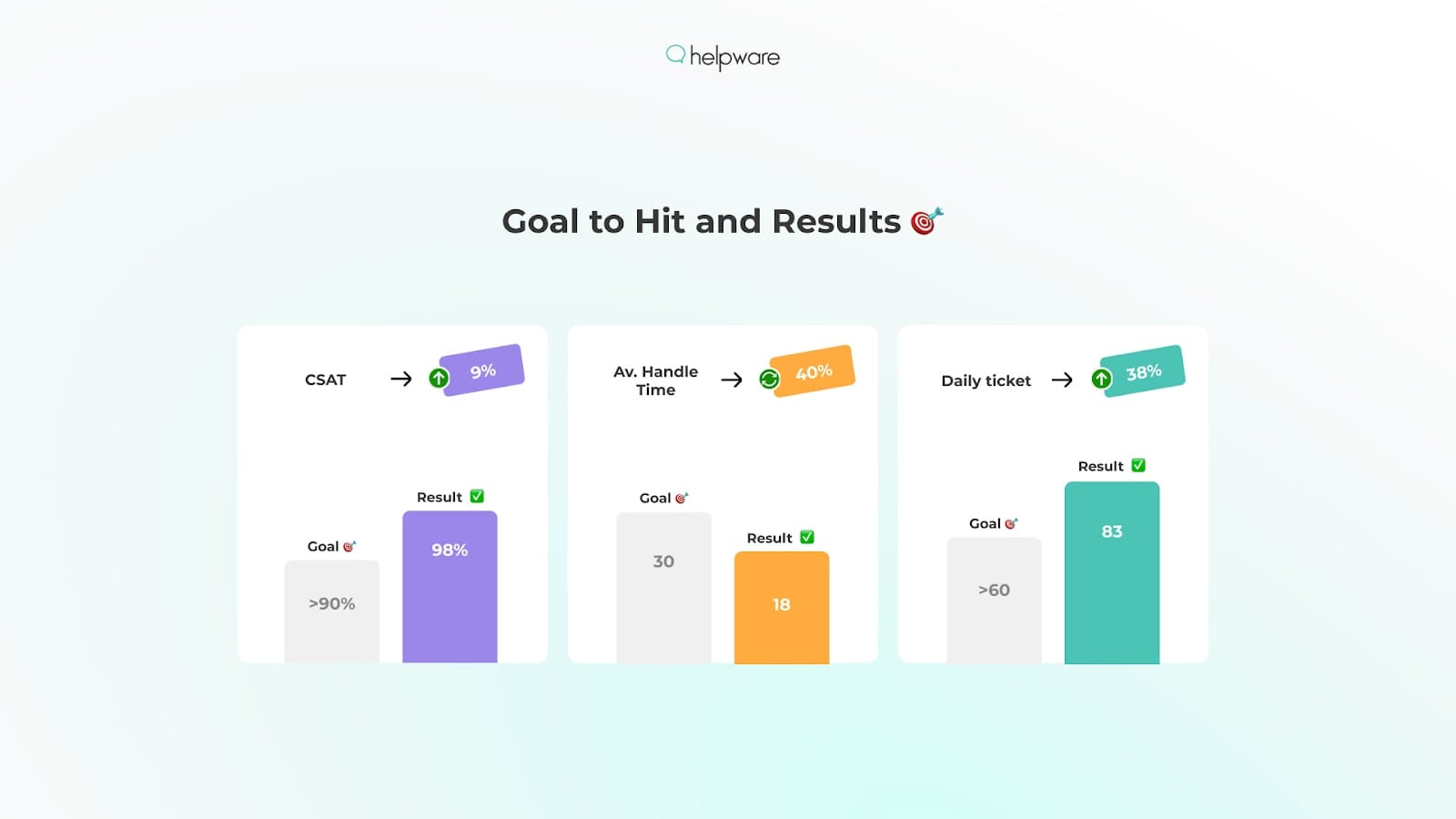As the BPO sector is experiencing constant change, leaders have to adapt new management methodologies to keep up with new market demands and increased client expectations. Sticking to traditional management styles is like sailing a ship with an old map when everyone is using satellite navigation. We are witnessing the paradigm shift towards more flexible, more adaptable practices and I’d like to consider two management practices — Agile and Lean and explore how their adoption could be a game-changer for the BPO industry. Given the unique characteristics and challenges of our industry, the application of either approach or perhaps a synergistic blend of both, so-called a Hybrid Agile-Lean model, could unlock new levels of efficiency and responsiveness. Let’s examine the potential of each approach and consider the viability of a hybrid model, aiming to chart a course that ensures our operations stay afloat in these competitive waters.
Understanding Agile and Lean Methodologies
Knowing the nuances of Agile and Lean methodologies helps us understand if they could be effective in enhancing efficiency and productivity in Business Process Outsourcing.
Boosting Efficiency and Adaptability in BPO with Agile Methodology
Agile methodology, to put it simply, is about being adaptable and fluid in how you operate in response to change. Agile prioritizes iterative development, teamwork, and adaptability. It values people and their interactions over procedures and equipment, and client input over contract negotiations. The dynamic and ever-changing environment in which the BPO industry operates is perfect for this methodology. Maybe this explains why managers tend to use this practice so frequently. Additionally, effective Agile implementation results in higher efficiency.
Here are the key trends that highlight the popularity of Agile Methodologies in business settings:
Adoption success rate
According to Agile Connection, businesses adopting Agile Methodology see a notable 64% success rate for their projects, outperforming the traditional waterfall method’s 49% rate. Agile is being used widely, which indicates that many businesses are thriving despite challenging economic times. Managers and corporate executives can increase revenues without raising customer costs thanks to Agile.
Impact on time-to-market
Agile practices can reduce time-to-market, a critical factor in BPOs for delivering client projects. According to the 13th Annual State of Agile Report, 71% of organizations reported a reduction in project completion time due to Agile practices.
Enhanced team morale and customer satisfaction
The same report indicated that adopting Agile methodologies led to enhanced team morale (63%) and increased customer satisfaction (54%).
Flexibility and adaptability
A key benefit of Agile in BPOs is its ability to adapt to changing requirements. A lot of BPO organizations find Agile practices help them manage changing priorities better.
Global spread
Agile methodologies have seen worldwide adoption, with North America, Europe, and Asia-Pacific regions being the front-runners. This global popularity indicates its applicability and flexibility in a variety of areas, particularly those where BPO services are widely used.
Agile approaches are becoming more widely acknowledged for their capacity to improve CSAT and performance—all of which are essential for success in the BPO sector.
Maximizing BPO Performance with Lean Methodology
Lean methodology is a methodical approach that is largely focused on increasing overall quality, decreasing waste, and optimizing efficiency in organizational and production processes. Lean was first implemented in the mid-1900s by the Toyota Production System, and it has since spread to a wide range of industries, including manufacturing, healthcare, and service industries like BPOs.
The Lean methodology’s main goals are to streamline procedures, eliminate pointless or repetitive work, and make sure that each stage benefits the consumer. Lean promotes a culture of continuous improvement in which staff members participate at all levels to find inefficiencies and offer fixes.
Increased productivity
Businesses that incorporated Lean into their BPO operations frequently reported notable productivity gains, sometimes reaching 25–30%. The reduction of non-value-adding tasks and the streamlining of procedures were credited with this improvement.
Cost reduction
A lean approach can result in significant cost savings, typically between 20% and 40%. These reductions are usually realized through enhanced process flow, decreased errors and rework, and more effective resource use.
Improved quality and customer satisfaction
Lean principles can enhance the quality of services provided by BPOs. This, in turn, leads to higher customer satisfaction levels. Some studies indicated improvements in service quality and customer satisfaction by over 50% after Lean implementation.
Reduction in turnaround time
BPO service turnaround times can be greatly shortened by implementing Lean techniques. Process times have been reported to have decreased by up to 40–50%, which is important for time-sensitive BPO operations.
Reduction of stressors in BPO environments
The unpredictable nature of conversations, greater time constraints, reduced autonomy, and tough performance monitoring are commonplace aspects of working in a call center. The Lean methodology can directly address these pressures by focusing on process simplification and the reduction of non-value-adding activities.
The Rationale Behind Agile and Lean in BPO
Because of the necessity to quickly adjust to shifting customer and market expectations, BPOs are adopting these approaches. Through the provision of quicker and more frequent answers, these strategies aid in enhancing client satisfaction and loyalty.

Challenges and Barriers in Agile and Lean Applications in BPO
While implementing Agile and Lean approaches in business process outsourcing can be transformative, there are challenges involved. These approaches need major adjustments to both structure and culture, which can be quite difficult.
Cultural shift and resistance: The necessary cultural shift is frequently the largest obstacle. Transitioning from traditional work practices to more dynamic and fluid approaches is necessary for the implementation of Agile and Lean. Various stakeholders who are used to the outdated methods of operation may oppose this change.
Risk of overemphasis on flexibility: Although agility is an essential element, an excessive emphasis on flexibility runs the risk of causing an absence of structure. Processes may become overly fluid as a result, making control and consistency difficult to maintain.
Potential for short-term focus: These approaches, especially Lean, with a strong emphasis on productivity, occasionally result in a short-term mentality where long-term strategic planning is neglected.
Implementing Agile and Lean in BPO Effectively
To fully reap the benefits of Agile and Lean methodologies, it is imperative to implement a set of best practices tailored to the unique dynamics of each BPO company. These techniques, when applied properly, can lead to considerable gains in CSAT and productivity.
Best practices for implementing Agile and Lean in BPOs:
- Success starts at the top. The commitment of leadership and a supportive organizational culture are fundamental. Setting the tone for a seamless transition requires leaders to be committed to the change.
- Begin with a small-scale project. This approach allows you to test the effectiveness of these methodologies in your unique environment, making adjustments as needed before a full-scale roll-out.
- Invest in comprehensive training programs. Equally important is fostering a culture that embraces continuous improvement and adaptability, pivotal elements of both Agile and Lean.
- Aim to strike a balance between maintaining staff wellbeing and increasing efficiency. Sustainable methods reduce burnout and promote long-term success.
- Make decisions with analytics in mind. Aligning strategies with real performance measures and promoting continuous improvement are two benefits of a data-driven strategy.
- You should know that one size does not fit all. The unique needs and circumstances of each BPO can affect the efficacy of Agile and Lean approaches. Tailor these approaches to the specific goals of your company.
There should be a strategic approach to overcoming the barriers to implementing Agile and Lean methodologies. One should take the distinct culture, structure, and goals of your company into account. With careful planning and execution, these methodologies can work wonders in the BPO sector.

A Hybrid Agile-Lean Model in a Customer Support BPO Setting
While there are certain benefits associated with both Agile and Lean techniques, I personally support a hybrid approach that combines their best qualities for maximum effectiveness. The case study of working together to deliver customer support with a health-tech company shows how the power of Agile and Lean coupled can greatly improve customer service and operational efficiency in the BPO industry. Through this case, we see the tangible benefits of these approaches in a real-world scenario.
Exceptional service for a Healthtech partner
The growing popularity of the Client’s product caused exponential growth of their client base and they turned to Helpware looking to expand their customer support and enhance customer experience. The main request was a superior team of Customer Support Representatives managing promotion clarifications, troubleshooting requests, answering app-related or meditation-related questions, and subscription cancellations across email and chat channels.
Agile methodology:
- Quick response to growth: As the Client’s customer base expanded, the need for adaptable and scalable customer support became essential. Agile methodology helped us effectively scale our services to meet these growing needs, showing the value of being flexible and responsive to change.
- Ongoing improvement with feedback: The use of performance scorecards and dissatisfaction analysis is a key aspect of Agile’s approach. This led to constant enhancements in customer service, as processes were regularly updated based on direct feedback.
- Working together: Collaboration is a big part of Agile, and this was clear in how Helpware and our Client worked jointly to improve training materials and fine-tune performance indicators. This teamwork ensured quick and effective responses to any new developments.
- Regular feedback loops: to ensure that the service provided was continually aligned with client needs and expectations.
Lean methodology:
- Streamlining and waste reduction: Introducing detailed process mapping and adjusting workflows to focus on the most impactful tasks shows Lean methodology at work. We improved our service delivery by concentrating on what adds the most value and cutting out unnecessary steps.
- Emphasis on key metrics: Achieving goals like over 90% customer satisfaction, reducing average handling time to 18 hours, and handling more than 60 tickets daily highlights Lean’s focus on measurable results and ongoing progress.
- Resource efficiency: Lean is all about using resources wisely, which Helpware demonstrated by providing top-notch service with a 20-person team across various languages and regions.
Results:
Customer satisfaction (CSAT): A 98% CSAT score, surpassing our goal by 9%, shows their success in keeping customers happy, aligning with the core goals of both Agile and Lean.
Average handling time (AHT): Cutting down AHT to 18 hours, 40% better than the target, shows significant improvements in efficiency, likely due to Lean’s emphasis on streamlined processes.
Ticket handling: Managing an average of 83 tickets daily, 38% above the target, demonstrates effective process management and the ability to handle large volumes, showcasing the flexibility and responsiveness of the Agile method.

This case shows how using Agile and Lean methodologies can lead to major gains in customer satisfaction, operational efficiency, and overall performance.
Concluding Insights
In my role as a leader at a BPO company, blending Agile and Lean methodologies is key to keeping pace in a fast-changing business environment. This approach is not just about being efficient; it’s about being smart and responsive to client needs. It’s a challenging yet rewarding journey, demanding a fine balance between the immediate advantages and the potential hurdles of these methodologies. It’s about steering this course thoughtfully, making sure our strategies not only align with Agile and Lean principles but also cultivate a culture of ongoing improvement and innovation. As Peter Drucker put it, ‘Efficiency is doing things right; effectiveness is doing the right things.’ This philosophy appeals to me as it means striking the right balance between operational excellence and strategic vision.











